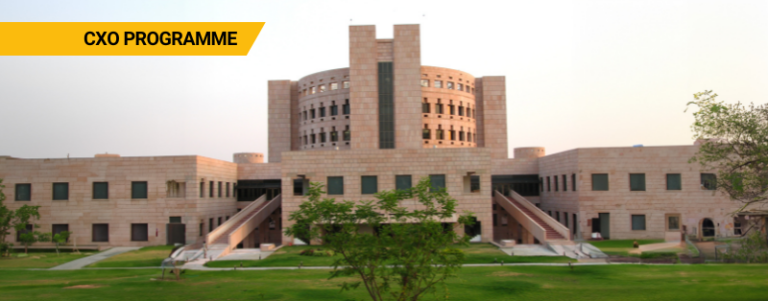The Crucial Elements of Functional Leadership: 10 Key Factors for Success

The functional leadership approach serves as a guide for executives and leaders, enabling them to provide optimal support to their teams. By emphasizing a clear vision and direction, fostering effective communication, and nurturing a collaborative culture, this approach empowers leaders to align their workforce for organizational success.
For instance, under Steve Jobs’ leadership, Apple’s design-centric approach focused on functional leadership aspects. Managers at all levels, including senior vice presidents, were required to exhibit three essential leadership qualities: profound expertise enabling engagement across functions, hands-on involvement in function-specific details, and a readiness to engage in collaborative cross-functional discussions for collective decision-making.
In this blog, you will learn about:
- Prioritization of Needs
- Action-Centric Focus
- Result Oriented
- Flexibility in Leadership
- Clearly Defined Responsibilities
- Structured Organization
- Boosting Team Morale
- Optimal Support
- Serve as Role Model
- Guided Approach
10 Elements of Functional Leadership
 The functional leadership model focuses on identifying what actions and behaviors lead to effective leadership and sharing them with all individuals instead of relying on a single leader. It aims to develop a leadership-oriented staff for higher workplace autonomy, productivity, and empowerment.
The functional leadership model focuses on identifying what actions and behaviors lead to effective leadership and sharing them with all individuals instead of relying on a single leader. It aims to develop a leadership-oriented staff for higher workplace autonomy, productivity, and empowerment.
Functional leadership empowers individuals; they don’t only depend on a single leader. As such, functional leadership is characterized by the following:
1. Prioritization of Needs
At the heart of functional leadership lies the recognition of three critical needs: those of the task, the group, and each individual. Before embarking on a project, leaders and team members must collaboratively identify and define these needs to achieve success.
For instance, consider a software development project. The task might involve completing coding milestones, the group’s need could be effective communication to resolve integration challenges, and the individual’s need could include skill development for specific programming languages.
2. Action-Centric Focus
Core to the functional leadership model is the understanding that every team member functions as a leader. While one individual may take on an organizing role, each member contributes with specific responsibilities that collectively shape success. This approach emphasizes the actions and contributions of every team member, promoting a shared leadership culture.
3. Result-Oriented
Essentially, success within the functional leadership model is gauged by the attainment of project goals. The emphasis is on the overall accomplishment rather than attributing success solely to an individual leader. This approach, therefore, fosters a sense of shared ownership and commitment to the project’s ultimate results.
For example, consider a marketing campaign. Here, various team members handle different tasks, such as content creation, social media management, and analytics. Functional leadership in this scenario means that everyone is focused on the end goal—increasing brand visibility and engagement—rather than just the leader.
4. Flexibility in Leadership
In an organization that follows this model, functional leadership transitions swiftly from an initial guiding presence to a team effort. All participants exercise leadership skills as the project unfolds, ensuring adaptability and collective responsibility.
5. Clearly Defined Responsibilities
Another cornerstone of functional leadership is the clarity in allocating responsibilities based on task, group, and individual needs. All team members are well-informed about their specific roles, ensuring that they possess the requisite resources and tools for effective task execution.
For instance, at Apple, the norm is that hardware specialists oversee hardware, software experts handle software, and so forth. Exceptions to this rule are uncommon.
6. Structured Organization
Given the autonomous nature of project execution in functional leadership, organization plays a pivotal role. Well-defined roles, responsibilities, and a structured approach ensure seamless progress. Leaders maintain meticulous records of assigned tasks and needs, while every member clearly understands what is expected from them.
7. Boosting Team Morale
Functional leaders play a crucial role in maintaining team morale and empowerment. They are responsible for keeping team members motivated and equipped to excel in their respective roles. Such involvement is pivotal for achieving the collective success of a project. This is because motivated team members are more invested in the project’s outcomes.
 8. Optimal Support
8. Optimal Support
Functional leaders adopt a proactive approach when it comes to understanding the resources and tools necessary for their team members to succeed. By having a comprehensive grasp of these requirements, leaders can ensure that the team has the optimal support needed to perform efficiently. This approach enhances the probability of success and ensures efficient utilization of organizational resources, leading to cost-effective outcomes.
9. Serve as Role Model
Functional leaders serve as role models by consistently displaying positive behavior throughout the project. Their commitment to tasks, professional interactions, and transparent communication set the standard for the entire team. Furthermore, their exemplary conduct encourages team members to emulate these qualities, contributing to an overall positive team culture.
10. Guided Approach
Finally, even within a self-directed work environment, functional leaders provide valuable guidance and oversight. Regular check-ins and interactions with team members serve as a compass to ensure that everyone remains aligned with project objectives. They also address challenges, provide assistance, and verify that tasks are executed effectively. This guided approach contributes to a cohesive team effort and ensures that the project stays on track to achieve its intended goals.
Frequently Asked Questions (FAQs) About Functional LeaderShip
1. How is Functional Leadership Different From Other Leadership Styles?
Functional leadership minimizes hierarchy, promoting a more equitable distribution of responsibility and decision-making. This makes functional leadership different from other leadership styles.
2. How Can One Enhance Functional Leadership Skills?
There are several ways one can enhance functional leadership skills. These include:
- Seek guidance from experienced leaders to learn from their insights and experiences
- Enroll in online courses to learn more about leadership theories and practical strategies
- Take on extra tasks to expand the skill set and demonstrate leadership potential
- Learn strategies to motivate and empower team members, fostering a collaborative environment
3. What Challenges Do Leaders Face When Implementing Functional Leadership?
Implementing functional leadership can pose several challenges for leaders, such as:
- Maintaining high levels of motivation and engagement among team members can be difficult
- Secondly, nurturing employee growth and skill development demands time and resources
- Furthermore, handling conflicts and stress within the team while maintaining a positive atmosphere is a delicate task
- Finally, striking the right balance between allowing autonomy and providing guidance can be challenging
4. How do the Key Elements of Functional Leadership Contribute to Overall Organizational Success?
The key elements of functional leadership contribute significantly to overall organizational success in the following ways:
- Functional leaders provide a clear direction that aligns teams toward common goals, thus fostering a sense of purpose and unity
- Granting autonomy to team members cultivates innovation and ownership, driving improved problem-solving and creativity
- Strong communication skills enhance collaboration, reduce misunderstandings, and facilitate smoother workflows within the organization
- Nurturing the growth of employees through coaching and skill-building enhances competence, job satisfaction, and overall team performance
- Prioritizing outcomes over processes ensures that the organization remains focused on delivering meaningful results and value
Learn All About Leadership With Emeritus
Now that you know the importance of functional leadership to organizational success, the necessity to enhance your leadership skills will also be evident. An easy way to do this is with Emeritus. Enroll in any of the comprehensive leadership courses and understand and learn about the different leadership styles. These courses offered by the best Indian institutes are designed for fresh graduates and working professionals. So take the first step to cementing success as a leader.






